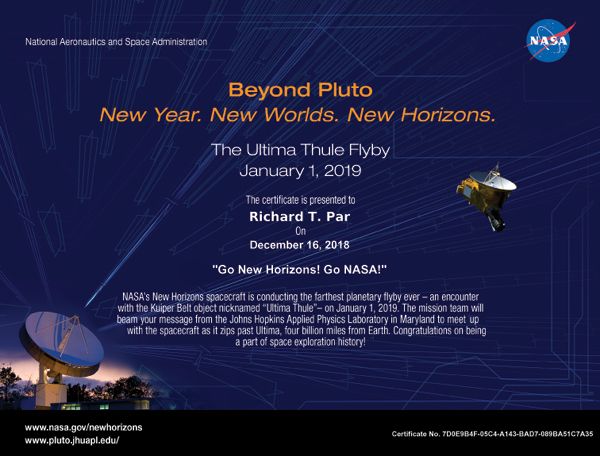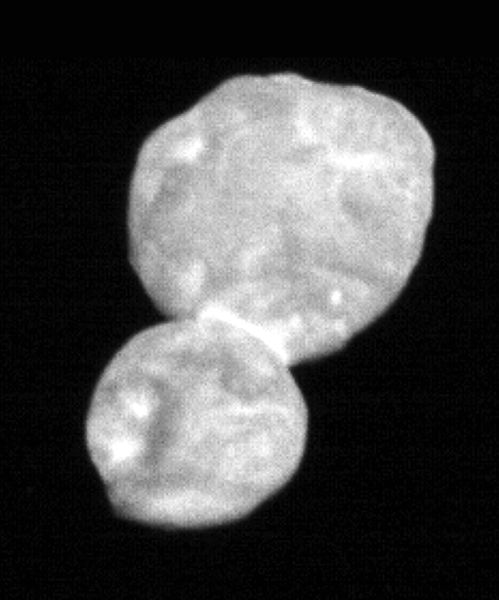
On December 31 (of last year), a transmission containing names and messages from 30,547 people was beamed towards NASA's New Horizons spacecraft only hours before it made its closest approach to the Kuiper Belt object Ultima Thule on New Year's Day. I would say that this makes up for me not being able to submit my name in time for it to be included on a CD containing over 430,000 monikers that was attached to the spacecraft almost 14 years ago, but it doesn't. Why? It's because I kept track of this latest campaign till the final minutes before its deadline (on Friday, December 21, 2018)...and over 37,000 names and messages were submitted by the time this campaign came to a close at 9:00 PM, Pacific Standard Time that Friday.
37,000+ messages were submitted online in the hopes that they would make their way to the Kuiper Belt region billions of miles from Earth and beyond. And yet, less than 31,000 greetings were ultimately included in the transmission. Why were the other 6,000 greetings omitted from the radio signal? Why would John Hopkins University (which was responsible for beaming the signal to New Horizons and not NASA itself) vet the submissions if they weren't gonna be stored on the flight computers of New Horizons itself—and instead making their way to interstellar space as just a mere radio wave (like the Hello From Earth message that was transmitted towards deep space in 2009)? Why would the folks at John Hopkins care if someone submitted "Jesus Christ," "Mr. T" or "Luke Skywalker" (which I didn't; I'm just listing random examples) if these names weren't gonna find their way into New Horizons' data recorders? Oh well.
I'm just hoping that I posted the certificate above because my name is about 81 billion miles in space (assuming my math is correct) since its journey began at the speed of light on December 31, and not one of those 6,000-plus submissions grounded on a computer server at John Hopkins University. That is all.

NASA / Johns Hopkins University Applied Physics Laboratory / Southwest Research Institute

No comments:
Post a Comment